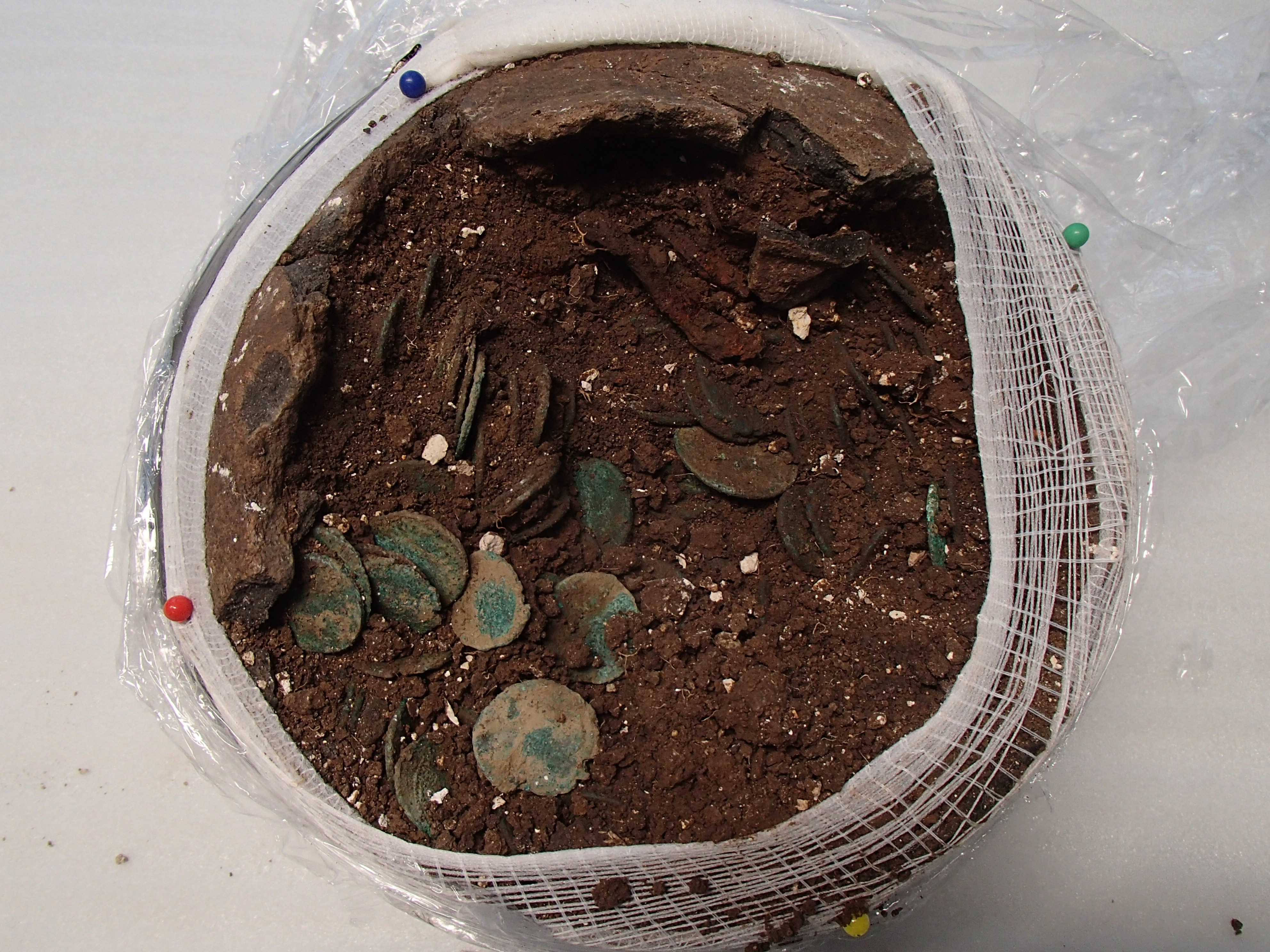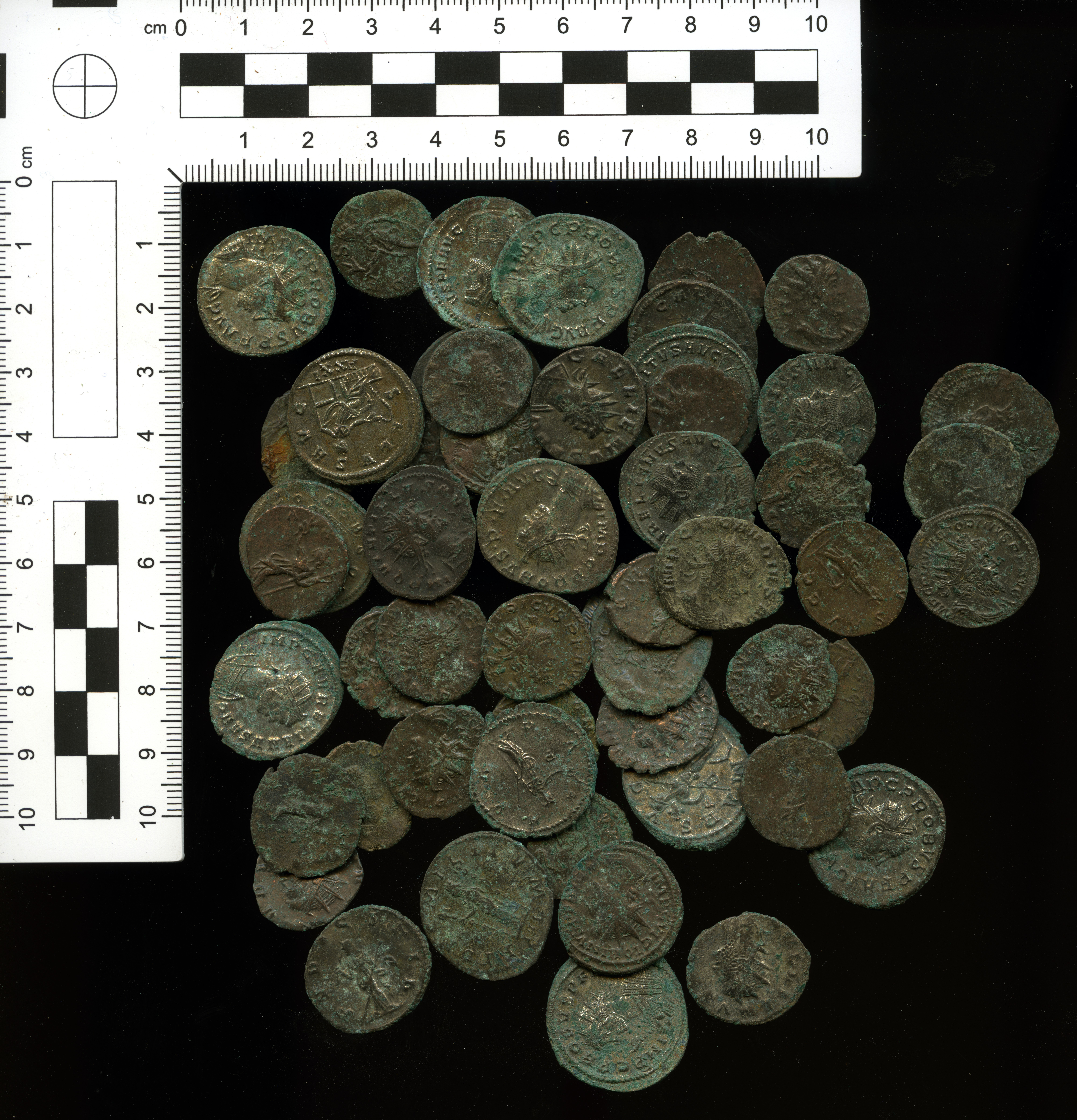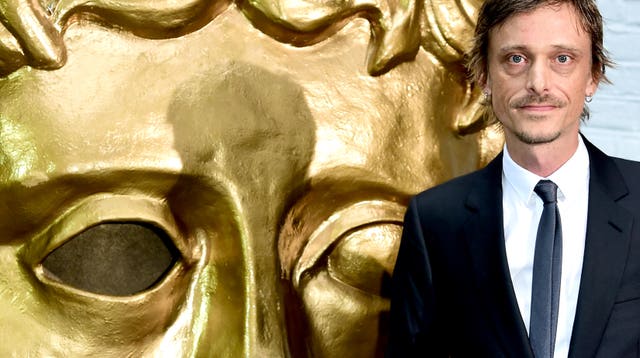Anglo Saxon treasure found by student valued at £145,000
A Roman coin hoard, axes and ingots were also among the discoveries.

Treasure discoveries made by the public have reached record levels, it has been revealed, as gold jewellery found by a student using a metal detector was valued at £145,000.
There were 1,120 treasure finds in 2016 – the highest figure for 20 years, since the Treasure Act came into law.
It was revealed as Thomas Lucking’s discovery – a gold necklace and pendants of “national significance” found in an Anglo Saxon grave, was valued at £145,000.
Lucking was a 23-year-old history student when he found the items while out metal-detecting in Winfarthing, Norfolk, in 2015.

Lucking told the Press Association that any money he receives – the landowner and his metal detecting partner will also get a share – “will probably end up as a deposit on a house in some way.
“It’s going to make things a lot easier,” he added.
Much of the gold jewellery was still on the skeleton of the woman, who would have been of extremely high status, buried between around 650 and 675 AD, and one of the earliest Anglo-Saxon converts to Christianity.
One of the large pendants, found lower down on the skeleton’s chest, was made of gold and inlaid with hundreds of tiny garnets and in itself is valued at £140,000.

“When it came out the atmosphere changed.”
The ex-student is now an archaeologist and still uses a metal detector, mostly at weekends.
“I had found the run-of-the-mill stuff, medieval coins a few Roman coins, smaller treasure, but another league really,” he said.

The coins – more than 2,000 were found in a pottery vessel – include the earliest products of the newly established Roman mint of London.
Another man, Dave Haldenby, discovered two late Bronze Age hoards, which experts believe may have been buried for ritual purposes, near to one another in Driffield, East Yorkshire, dating to around 950-850 BC.
One hoard contained 158 axes and ingots and is the largest of its kind discovered in Yorkshire, while the other consisted of 27 axes and ingots.

Most (96%) of the treasure finds were discovered by people using metal detectors.
It comes as the subject of metal detecting reaches a wider audience thanks to Mackenzie Crook’s acclaimed TV comedy Detectorists.
Michael Lewis, the British Museum’s head of portable antiquities and treasure, said that “metal-detecting can make an immense contribution to archaeological knowledge” and that “the vast majority of people are keen that their hobby has a positive impact.”





